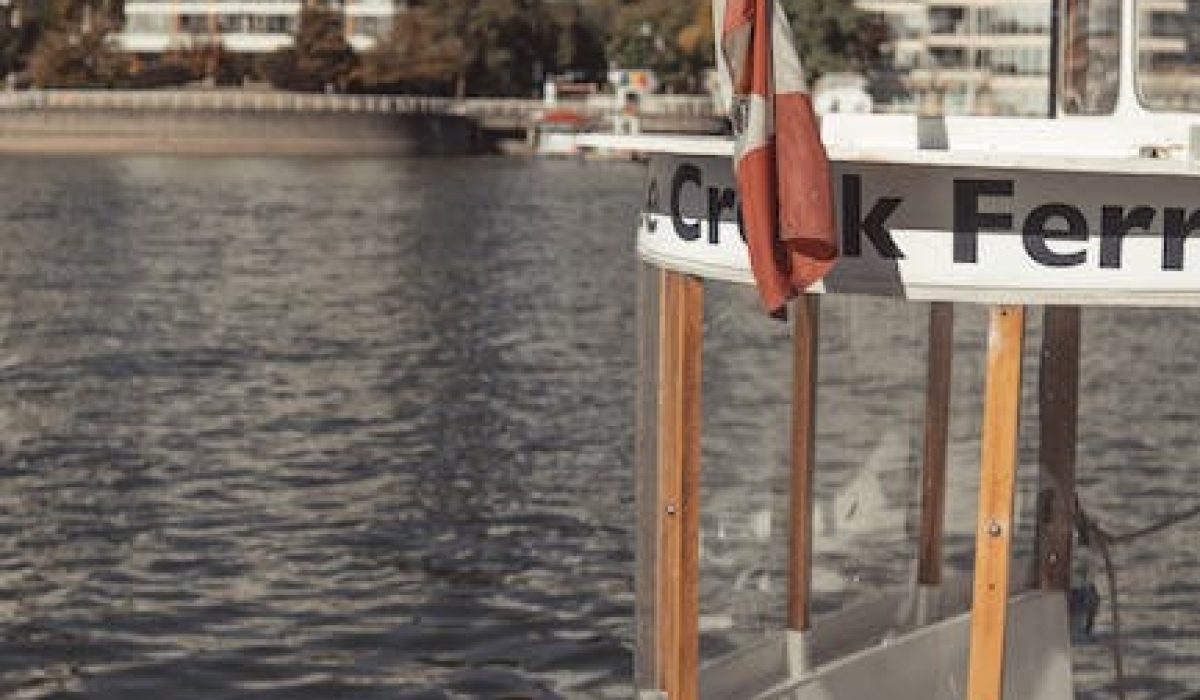Welcome to our blog, where we will explore the world of sailing etiquette and responsible behavior on the water. Whether you are a seasoned sailor or just starting out, understanding proper communication signals and respecting the right of way is essential for safe navigation. In this post, we will delve into the dos and don’ts when passing other vessels, as well as the etiquette for anchoring and mooring. Additionally, we will discuss considerations when approaching marinas and docks, and the importance of responsible behavior towards marine wildlife. So, let’s set sail and learn how to navigate the waters with respect and consideration for others!
Proper Communication Signals For Safe Sailing
Sailing Etiquette: Proper Communication Signals For Safe Sailing
When it comes to sailing, it is not just about maneuvering your vessel and feeling the wind in your sails. It is also about proper communication and signaling to ensure the safety of everyone on the water. Clear and consistent signals are crucial in preventing accidents and maintaining a harmonious environment. In this blog post, we will discuss some of the important communication signals that every sailor should be familiar with.
1. Sound Signals: One of the most crucial forms of communication on the water is sound signals. These signals are used to indicate a vessel’s intentions, presence, and warnings. For instance, a short blast of the horn indicates that you are altering your course to starboard, while two short blasts indicate that you are altering your course to port. Three short blasts are used to inform other vessels that you are backing up.
2. Visual Signals: In addition to sound signals, visual signals are also essential for safe sailing. These signals are primarily conveyed through the use of flags, lights, and shapes. For instance, hoisting a black ball during the day indicates that your vessel is at anchor, while a diamond shape signifies that there is diving activity taking place in the vicinity. Familiarize yourself with the different visual signals to effectively communicate and understand the intentions of other vessels.
3. Radio Communications: Radio communications have revolutionized the way sailors communicate on the water. The use of VHF radios allows for clear and instantaneous communication between vessels. When transmitting radio messages, it is important to keep your communication concise and to the point. Use standard phrases and avoid unnecessary chatter that could clutter the airwaves. Additionally, always monitor the designated distress frequency (channel 16) for any distress calls that may require your assistance.
By following proper communication signals, you not only ensure your own safety but also contribute to a more organized and enjoyable sailing experience for all. Remember to study and understand these signals before heading out onto the water to prevent any potential misunderstandings or accidents. Clear communication leads to smooth sailing!
Respecting Right Of Way: Rules To Follow 👇
Sailing Etiquette plays a crucial role in ensuring the safety and smooth operation of watercraft on the open water. One of the fundamental aspects of sailing etiquette is respect for the right of way. Knowing and adhering to the rules regarding right of way not only promotes safety but also helps prevent collisions and conflicts between vessels. In this blog post, we will discuss some key rules to follow when it comes to respecting right of way while sailing.
1. Port-Starboard Rule: According to this rule, when two sailing boats are approaching each other, the boat on the port tack must yield the right of way to the boat on the starboard tack. The starboard tack refers to when the wind is coming from the right side of the boat. So, if you are on the port tack, be courteous and give way to the boat on the starboard tack.
2. Windward-Leeward Rule: When sailing with other boats, always remember the windward-leeward rule. The boat windward, meaning the boat closer to the wind, has the right of way, while the leeward boat, which is downwind, must keep clear. This rule ensures that the boat with less control over its course, due to the wind direction, has the right of way and can maneuver safely.
3. Overtaking Rule: Overtaking another vessel requires careful consideration and adherence to the overtaking rule. The boat being overtaken is considered the “stand-on” vessel and generally maintains its course and speed. The overtaking boat is the “give-way” vessel, responsible for maneuvering in a way that keeps a safe distance from the stand-on vessel. It is crucial to communicate your intentions clearly and early to avoid any misunderstandings.
By following these rules and others defined by sailing etiquette, you contribute to a safer and more respectful sailing experience for everyone on the water. Respecting the right of way not only prevents accidents but also promotes harmony and enjoyment among sailors.
Etiquette For Anchoring And Mooring ⏬
Proper communication and adherence to sailing etiquette are crucial when it comes to anchoring and mooring your boat. Anchoring and mooring are essential aspects of sailing that require careful consideration and respect for the rules and fellow boaters. By following proper etiquette, you can ensure both the safety and enjoyment of everyone on the water.
One of the most important aspects of anchoring and mooring etiquette is selecting an appropriate location. When choosing a spot to anchor or moor your boat, it is essential to consider the safety of both your vessel and others. Avoid congested areas or locations with underwater hazards that may pose a risk to your boat and the boats around you. Additionally, be mindful of sensitive marine habitats and avoid dropping anchor in these areas to protect the environment.
Another crucial element of etiquette for anchoring and mooring is maintaining a safe distance from other vessels. When anchoring or mooring, it is important to anchor far enough away from other boats to ensure that your boat and theirs have ample space to swing with wind or tide changes. This will minimize the risk of collisions or entanglements and allow for easy maneuvering when leaving or entering the area.
- Properly display your anchor lights: When anchoring overnight or in conditions of low visibility, it is essential to display the appropriate anchor lights. These lights signal to other boaters that your vessel is stationary and not underway. This helps prevent collisions and ensures the safety of everyone on the water.
- Use proper anchor and mooring lines: When anchoring or mooring, it is important to use appropriate lines that are in good condition. These lines should be strong enough to withstand the forces of wind and tide. Additionally, ensure that your lines do not obstruct passage for other boats and are properly secured to prevent unintentional drifting.
- Clean up after yourself: When anchoring or mooring, be mindful of the impact you have on the environment. Dispose of any trash or waste properly and avoid polluting the water. Leave the area in the same or better condition than you found it to preserve the natural beauty for future boaters.
| Tips for Anchoring and Mooring | Benefits of Proper Etiquette |
|---|---|
| Choose an appropriate location | Ensures the safety of your boat and others |
| Maintain a safe distance from other vessels | Reduces the risk of collisions and entanglements |
| Display anchor lights | Prevents collisions during low visibility |
| Use proper anchor and mooring lines | Ensures the stability of your boat |
| Clean up after yourself | Preserves the beauty of the marine environment |
Dos And Don’ts When Passing Other Vessels
Dos and Don’ts When Passing Other Vessels
When it comes to sailing, it’s important to not only follow safety protocols but also abide by proper sailing etiquette. One crucial aspect of this etiquette is knowing the dos and don’ts when passing other vessels on the water. By understanding the rules and guidelines, you can ensure a smooth and respectful experience for everyone involved.
Do:
- Use proper communication signals to indicate your intentions. Clear and concise signals are essential for avoiding misunderstandings and potential accidents.
- Adhere to the right of way rules. If you approach another vessel from their starboard side, they have the right of way and you should yield.
- Give a wide berth when passing larger vessels. Their size may limit their maneuverability, so it’s essential to provide enough space to avoid any possible collisions.
Don’t:
- Impede the path of other vessels. Always maintain a predictable course and speed, allowing others to assess and respond accordingly.
- Ignore navigation aids and markers. These markers are in place for a reason and failing to obey them can lead to dangerous situations.
- Engage in aggressive behavior or excessive speed when passing. It’s important to maintain a respectful and considerate approach when sharing the water with fellow sailors.
Overall, observing the dos and don’ts when passing other vessels not only ensures your safety but also contributes to a harmonious sailing experience for everyone. By practicing good communication, respecting right of way rules, and maintaining responsible behavior, you can enjoy your time on the water while keeping others safe.
Considerations When Approaching Marinas And Docks
When it comes to sailing etiquette, there are key considerations that must be taken into account when approaching marinas and docks. These guidelines are in place to ensure the safety and smooth operation of these busy areas, as well as to maintain a respectful and responsible attitude towards fellow sailors and the environment.
1. Follow the designated channels: Marinas and docks often have marked channels that indicate the correct route for approaching and departing. It is essential to adhere to these guidelines to prevent any potential collisions with other vessels and to avoid damaging the marina infrastructure.
2. Pay attention to speed: When entering a marina or approaching a dock, it is crucial to reduce your speed. This not only minimizes the risk of accidents but also helps to prevent excessive wake that can disturb other moored vessels and create unnecessary turbulence in the water.
3. Be mindful of other boats: Keep a vigilant eye out for other boats and give them the right of way. If you notice a boat maneuvering or signaling for a specific action, such as docking or leaving a slip, allow them ample space and time to carry out their maneuver safely.
- It is also important to remember that marinas and docks are shared spaces, so be considerate of other boaters and their needs. Avoid playing loud music, revving your engine unnecessarily, or creating excessive noise that may disturb others.
| Do: | Don’t: |
|---|---|
| Follow the instructions and guidance provided by marina staff. | Ignore any signage or signals indicating restricted areas or procedures. |
| Ensure that all necessary paperwork, such as registration or dock reservations, is completed before arriving at the marina. | Attempt to dock or moor in a spot that is already assigned to another vessel. |
| Dispose of waste and garbage in the designated containers provided by the marina. | Dispose of any waste or garbage in the water or on the dock. |
By considering and adhering to these guidelines, we can all contribute to a safer and more enjoyable experience at marinas and docks. Respect for fellow sailors, marina staff, and the environment is key to maintaining the beauty and integrity of these vital sailing destinations.
Responsible Behavior Towards Marine Wildlife
When we venture out into the great blue ocean, it is important to remember that we are sharing the waters with a diverse array of marine wildlife. As sailors, it is our responsibility to ensure that we are practicing proper etiquette and behaving in a way that is respectful and considerate towards these magnificent creatures. In this blog post, we will explore some essential guidelines for responsible behavior towards marine wildlife.
1. Observe from a distance: One of the most important principles when it comes to interacting with marine wildlife is to observe them from a safe distance. It is crucial to avoid approaching too closely or attempting to touch or feed the animals. Remember, we are visitors in their home, and it is essential to respect their space and natural behavior.
2. Do not disturb their habitat: While it is undoubtedly exciting to witness marine wildlife in their natural environment, it is important to be mindful of their home. Avoid shedding any waste or garbage into the water, as it can have severe consequences for their ecosystem. Additionally, be cautious of dropping anchor in sensitive areas such as coral reefs or seagrass beds, as this can cause irreversible damage to their habitat.
3. Reduce your noise pollution: Noise pollution is a significant concern for marine wildlife, as it can disrupt their communication and navigation. When sailing, make an effort to minimize any unnecessary noise, such as loud music or engine revving. By reducing noise pollution, we can contribute to a calmer and more harmonious environment for marine creatures to thrive.
Section Content Proper Communication Signals For Safe Sailing It is essential to establish effective communication signals to ensure safe sailing. Utilizing proper hand signals, flags, and whistles can help prevent accidents and facilitate smooth interactions with other vessels. Respecting Right Of Way: Rules To Follow Understanding and respecting the right of way rules is crucial for maintaining order and avoiding collisions. Always give way to vessels with priority and be aware of your surroundings to navigate safely. Etiquette For Anchoring And Mooring Mastering anchoring and mooring etiquette is essential for a respectful sailing experience. Avoid crowding anchorages, use proper mooring techniques, and be considerate of other sailors when docking. Dos And Don’ts When Passing Other Vessels Knowing the dos and don’ts when passing other vessels is crucial for maintaining a smooth and safe sailing experience. Be aware of the vessel’s signals, maintain a safe distance, and be courteous to fellow sailors. Considerations When Approaching Marinas And Docks Approaching marinas and docks requires careful consideration to avoid accidents and damage. Follow the marina’s guidelines, be mindful of pedestrians, and navigate at a safe speed to maintain a responsible approach.
Frequently Asked Questions
What are some proper communication signals for safe sailing?
Proper communication signals for safe sailing include using sound signals, such as horns or whistles, to indicate your intentions or alert others to your presence. It is also important to use visual signals, such as navigation lights, to communicate with other vessels at night or in low visibility conditions.
What are the rules to follow for respecting right of way?
When respecting right of way, it is important to understand and follow the navigation rules established by maritime authorities. These rules specify which vessel has the right of way in different situations, such as when two vessels are approaching each other head-on or when one vessel is overtaking another.
What is the etiquette for anchoring and mooring?
The etiquette for anchoring and mooring includes giving enough space to other vessels, avoiding anchoring in navigation channels or restricted areas, and using proper techniques and equipment to ensure your anchor holds securely. It is also important to respect any local regulations or guidelines regarding anchoring or mooring.
What are some dos and don’ts when passing other vessels?
When passing other vessels, it is important to maintain a safe distance and avoid creating excessive wake or turbulence. It is recommended to pass at a slow speed, leaving enough space for the other vessel to maneuver. Do not cut across the bow of the other vessel or impede its progress.
What are some considerations when approaching marinas and docks?
When approaching marinas and docks, it is important to adhere to any posted speed limits or traffic patterns. Maintain a cautious speed and be aware of other vessels or people in the area. Follow any instructions or guidelines provided by marina staff for safe docking or mooring.
How should one behave responsibly towards marine wildlife?
Responsible behavior towards marine wildlife includes avoiding approaching too closely or disturbing their natural habitats. Maintain a safe distance and do not attempt to touch, feed, or harass marine animals. Dispose of any trash or waste properly to prevent harm to marine life.
Importance of respecting marine ecosystems?
Respecting marine ecosystems is crucial for the overall health and sustainability of the marine environment. This includes avoiding activities that can harm or disturb marine habitats, such as anchoring on coral reefs or dumping pollutants into the water. By respecting marine ecosystems, we can help preserve biodiversity and ensure the enjoyment of future generations.




